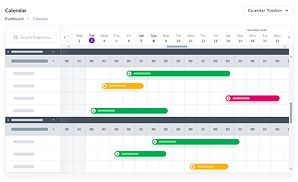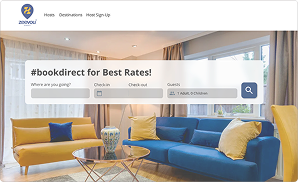Pricing properties is a key factor in the vacation rental industry. In order to get the most out of our inventory, we need to use the right revenue management principles and tools in order to increase the performance of our rental units.
Table of Contents
RevPAR
Revenue per Available Room or RevPAR is one of the most important metrics or Key Performance Indicators (KPIs) to measure the performance of a hotel room or a serviced apartment unit. It shows on average how much revenue is generated by the available rooms/units during a particular period of time.
It is calculated by dividing the revenue by the total number of available room nights. It can also be calculated by multiplying the occupancy rate by ADR, or Average Daily Rate.
RevPAR = Revenue ÷ Total available room nights
RevPAR = Occupancy rate × ADR
In order to achieve higher RevPAR, we need to achieve higher occupancy rates and ADR. However, in real life, this is not a simple task. Occupancy rate and ADR are inversely related for the same reason that the demand curve or price-response curve is downward-sloping. So finding the right balance between occupancy rate and ADR is one of the most important factors for achieving higher revenue and profit.
Elasticity of Demand
The concept of elasticity of demand helps us to better understand the interaction of ADR (price) and revenue.
Demand for some markets and properties such as economy hotels is inelastic. In other words, increasing the price reduces the quantity demanded by a little; therefore, the revenue increases.
On the other hand, demand for some properties or markets such as luxury hotels is elastic and increasing the price decreases the quantity demanded by a lot. As a result, the revenue decreases.
In the same manner, decreasing the price (ADR) reduces the revenue if demand is inelastic, but decreasing the price increases the revenue if demand is elastic.
RevPAR and Cost
Although RevPAR is an important performance metric, it has one significant shortcoming. It does not take into account the cost of reservations. For instance, cleaning cost is an important cost in particular for the serviced apartment industry.
Assuming that cleaning is being offered on a weekly basis and the nightly rate of monthly stays and four-night stays are equal, the RevPAR generated by a monthly stay is equal to seven four-night stays; however, in the second scenario three more cleanings should be done and the operating cost is higher. As a result, the monthly stay generates more profit in comparison to seven four-night stays.
GOPPAR (Gross Operating Profit per Available Room) is another important revenue management KPI that takes into account the revenue and cost and is calculated by dividing gross operating profit (revenue minus operating costs) by total available room nights.
GOPPAR = (Revenue – Operating cost) ÷ Total available room nights
For the above example, GOPPAR of the monthly stay is greater than the four-night stay which shows that the monthly stay is more profitable.
Long-Term Stays
Long-term stays can be sources of steady revenue and are usually less risky than short-term bookings with higher ADR. They usually generate higher GOPPAR by boosting the occupancy rate and reducing operating costs.
We can try to attract long-term bookings by setting 5 nights or even longer minimum stay restrictions and gradually reduce the minimum stay restriction for upcoming days. This way, we keep the calendar open for guests who are willing to book long-term stays and at the same time, we can offer more competitive rates without being worried about receiving short-term bookings with low rates, which also block our calendar.
It is worth noting that guests who book longer stays are usually more price sensitive so using weekly and monthly discounts is recommended.
Market Segmentation
The other powerful tool which helps us to maximise revenue and profitability is market segmentation.
In hospitality, we can divide guests into two major segments based on their booking behaviour: business travellers and leisure travelers.
Business travellers are less price sensitive, book later, less flexible and usually book shorter stays. On the other hand, leisure travellers are highly price sensitive, book earlier, are more flexible and usually book longer stays.
In practice, we cannot ask each guest whether they are travelling for business or leisure. However, we can try to target each segment by setting restrictions and conditional discounts based on its booking behaviour. For instance, we can offer non-refundable early bird discounts to guests who book months in advance in order to target leisure travelers or quote higher prices for enquiries which are received from corporate travel agents and at the same time offer a more flexible cancellation policy.
Capacity Allocation
If you are managing properties with multiple units, one way of optimising profit is trying to find the best answer to the “capacity allocation” problem.
Airlines, hotels and car rentals all have perishable inventories; therefore, in all three industries, it should be determined how many seats/rooms/cars to allow low-rate customers to book when there is the possibility of future high-rate demand.
When we manage a high number of units, and it is estimated that the high-rate demand is less than our capacity, it is wise to allocate few units to low-rate bookings with an extended length of stays to maximise the profit. In other words, if you know that on average, 70% of your units are occupied by short-term bookings, why not offer the remaining 30% to guests who are willing to stay for a month but have a low budget?
Quality
Do you think if the price of a hotel or serviced apartment is increased, the same occupancy rate and market share can be maintained?
Although the price and demand are inversely related, we can increase the ADR and maintain the same occupancy rate if we increase the quality of our service (get higher review scores). By increasing the quality of our service, in fact, we are shifting the demand curve!
A study from the Cornell Center for Hospitality Research (Anderson 2012) shows that if a hotel increases its review score by 1 point on a 5-point scale, the hotel can increase its price by 11.2 per cent and still maintain the same occupancy rate. It means that increasing the review score of your Airbnb listing by 1 star increases its RevPAR by approximately 10%.
Vacation Rental Income Calculator
A vacation rental property deal analyser can help with pricing your rental property by analysing various factors. By factoring in expenses like property taxes and maintenance costs, a deal analyser can help you determine the minimum rent you need to charge to cover your expenses.
Analysing data can help you identify the price and occupancy rate at which your vacation home starts generating profits. With this information, you can price your rental property accurately and maximise your earnings and profits.




